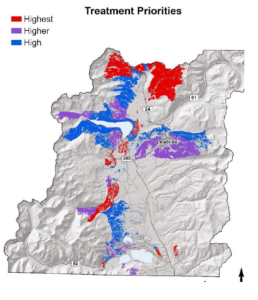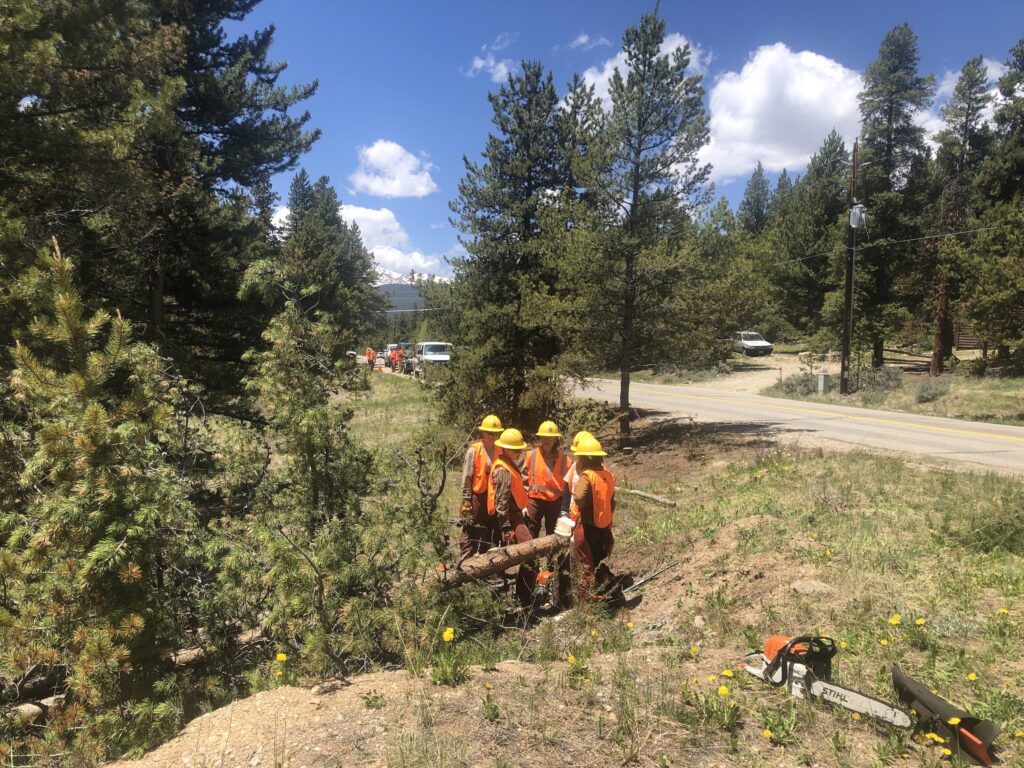Updated community wildfire plan drives new work among Forest Health Council partners

With a new community wildfire protection plan and grant funding in-hand, strategic forest treatments designed to reduce the intensity of a wildfire will begin in earnest around Lake County this year.
Projects are based on treatment priority areas identified in the Lake County Community Wildfire Protection Plan, which the county updated in 2022 by partnering with the Colorado Forest Restoration Institute at Colorado State University. The plan includes a new map set that shows where a small amount of treatment would generate high results.
“We are targeting priority areas identified in the new plan to reduce potential fire behavior and give responders a place to start conducting suppression activities,” said Josh Kuehn, a forester with the Colorado State Forest Service (CSFS), a Lake County Forest Health Council partner.
Projects slated for this year include a fuel break to protect the Gem Valley, Four Seasons, Silverhills and other nearby subdivisions, as well as continued roadside thinning along County Road 4 near Leadville proper, Kuehn said.

Fuel mitigation activities by the U.S. Department of Agriculture, Forest Service will continue this summer around Turquoise Lake, a component of the Tennessee Creek Project, said Leadville District Ranger Pat Mercer. Thinning that began in 2018 will move to the northeast and south sides of the lake as the project layout expands into the Halfmoon Creek drainage.
The U.S. Forest Service also will thin about 50 acres in an area known as Lodgepole Flats this fall.
And the National Forest Foundation joins other Forest Health Council partners, including CSFS, to support a project on private and Bureau of Land Management properties near the Sugarloaf Dam, where about 180 acres are slated to be addressed this fall.
In addition to improving wildfire resiliency, the projects protect municipal water sources and recreation assets from secondary post-fire effects, Mercer said. “We have a large system of campgrounds, trails and trailheads that will be more fire resilient with these treatments,” he explained.
The wildfire plan incorporates a range of community protection priorities, including infrastructure and cultural assets such as power lines and historic structures. The treatment map pinpoints where mitigation work would maximize wildfire risk reduction, considering location, type, feasibility and cost.
“We’re trying to create a buffer on National Forest System lands that would then adjoin with private lands treatments so there is more time to react, to evacuate, and to mobilize resources to fight a wildfire and control it,” Mercer said. “Cross-boundary projects that treat both federal and private lands will provide results that lead to community wildfire resilience.”
A new community chipping program also will begin this summer to encourage private landowners to learn how to treat their lands and remove wood slash. The program is a partnership among the Arkansas River Watershed Collaborative (ARWC), Colorado Mountain College, Leadville/Lake County Fire Rescue and Lake County Public Works.
“We will be pairing slash removal events with mitigation workshops so that landowners understand how to reduce wildfire risk around their homes,” said Andy Lerch, ARWC’s lead forester.
For more information about the chipping program, contact Lerch at andy@arkcollaborative.org.
The chipping program and a significant portion of the forest thinning work is funded by CSFS grants awarded to the county earlier this year. Projects also are funded by the Colorado Strategic Action Wildfire Program (COSWAP), which was created after the devastating 2020 fire season by the Colorado legislature.
